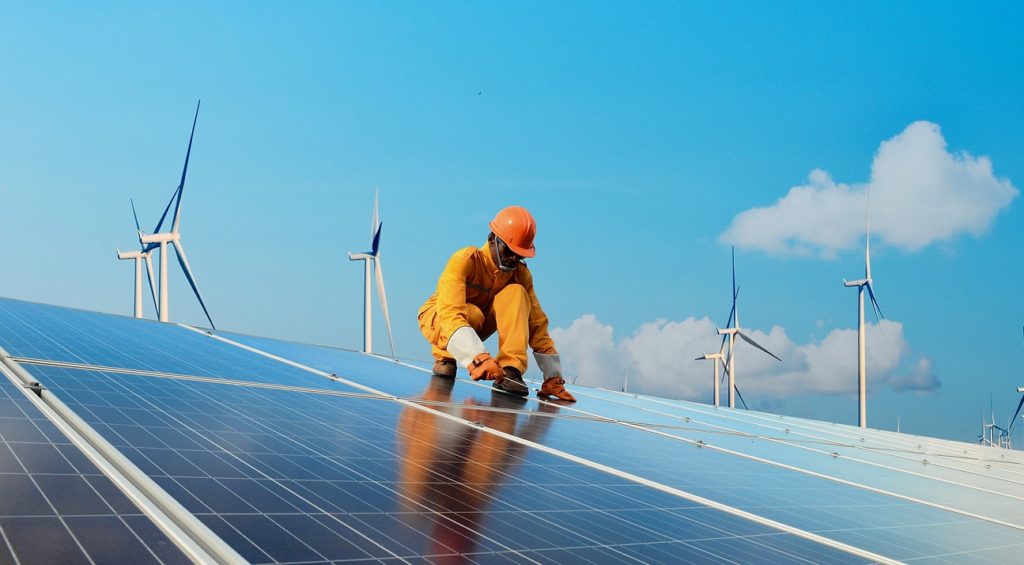
Solar PV capacity is expected to almost treble over the 2022-2027 period, growing by 1.5TW and surpassing coal as the largest source of power capacity worldwide, according to a report from the International Energy Agency (IEA).
In its “Renewables 2022” report, the IEA expects renewables to grow by 2.4TW over the next five-year period, with an acceleration of installations in the residential and commercial rooftop market globally to help reduce energy bills. The distributed PV market could reach 170GW of annual addition by 2027.
As renewables growth continues to move faster, the IEA’s expected increase is 30% higher than last year’s forecast, with solar PV accounting for 60% of all renewable capacity expansion over the next five years.
The upwards revision will be primarily driven by China., which will account for half of new global renewable power over the five-year period.
Meanwhile, the European Union, the US and India’s implementation of new regulations and market reforms, such as the REPowerEU, the Inflation Reduction Act (IRA) or the Production Linked Incentive (PLI) will also accelerate the growth of renewables.
In China, solar PV is expected to surpass hydropower as the largest installed renewable capacity by 2023, while both solar and wind are set to reach 1.2TW capacity five years ahead of the country’s 2030 initial target. Renewable capacity is expected to double during the five-year period, with an increase of almost 1,070GW, of which 90% will come from solar PV and wind power.
Meanwhile the IEA has increased its forecast for the US by 25%, set to increase its renewables capacity by 270GW between 2022-2027, due to the passing of the IRA earlier this year and its new incentives which “provides unprecedented long-term policy visibility for multiple technologies”.
However, renewables capacity additions in 2022 are expected to decrease by 20% compared with last year due to supply chain interruptions and the anti-dumping and circumvention investigation of solar panels produced from four Southeast Asian countries, which saw its preliminary determination from the US Department of Commerce published last week.
“Renewables were already expanding quickly, but the global energy crisis has kicked them into an extraordinary new phase of even faster growth as countries seek to capitalise on their energy security benefits. The world is set to add as much renewable power in the next 5 years as it did in the previous 20 years,” said IEA Executive Director Fatih Birol.
While China’s remain a dominant player for manufacturing capacity in the following years, signs of diversification in the global solar PV supply chain are emerging with the US and India’s new policies – which are expected to boost investment in solar manufacturing by US$25 billion between 2022-2027 – potentially reducing China’s global manufacturing capacity share from 90% to 75% by 2027, according to the report.
Driven by a combination of energy security concerns and climate ambitions, Europe’s renewable capacity added in the next five years will be twice as high as the previous five-year period.
This year’s forecast saw a 30% growth from last year’s report for the EU and will be primarily led by Germany (with a 50% increase from last year) and Spain (60%).
The deployment of solar PV and wind power could be even faster if the European Union streamlines and reduces permitting timelines, improve auction designs and provide better visibility on the auctions schedules, as well as improving incentive schemes to fast-track the installation of rooftop solar. The implementation of those policies could increase the growth of renewables by 30% and be on track with REPowerEU’s more ambitious modelled goals.
Moreover, the upwards trend of commodity prices, high freight costs and continued supply chain issues have increased solar PV investment costs by 10-20% from pre-Covid levels and as a result have increased global auction prices in 2022, for the first time in a decade.
Meanwhile, the production of green hydrogen from solar PV and wind power is expected to add 50GW of capacity, and will be led by China, Australia, Chile and the US. These markets will account for two-thirds of dedicated renewables capacity for hydrogen production over the 2022-2027 period.
